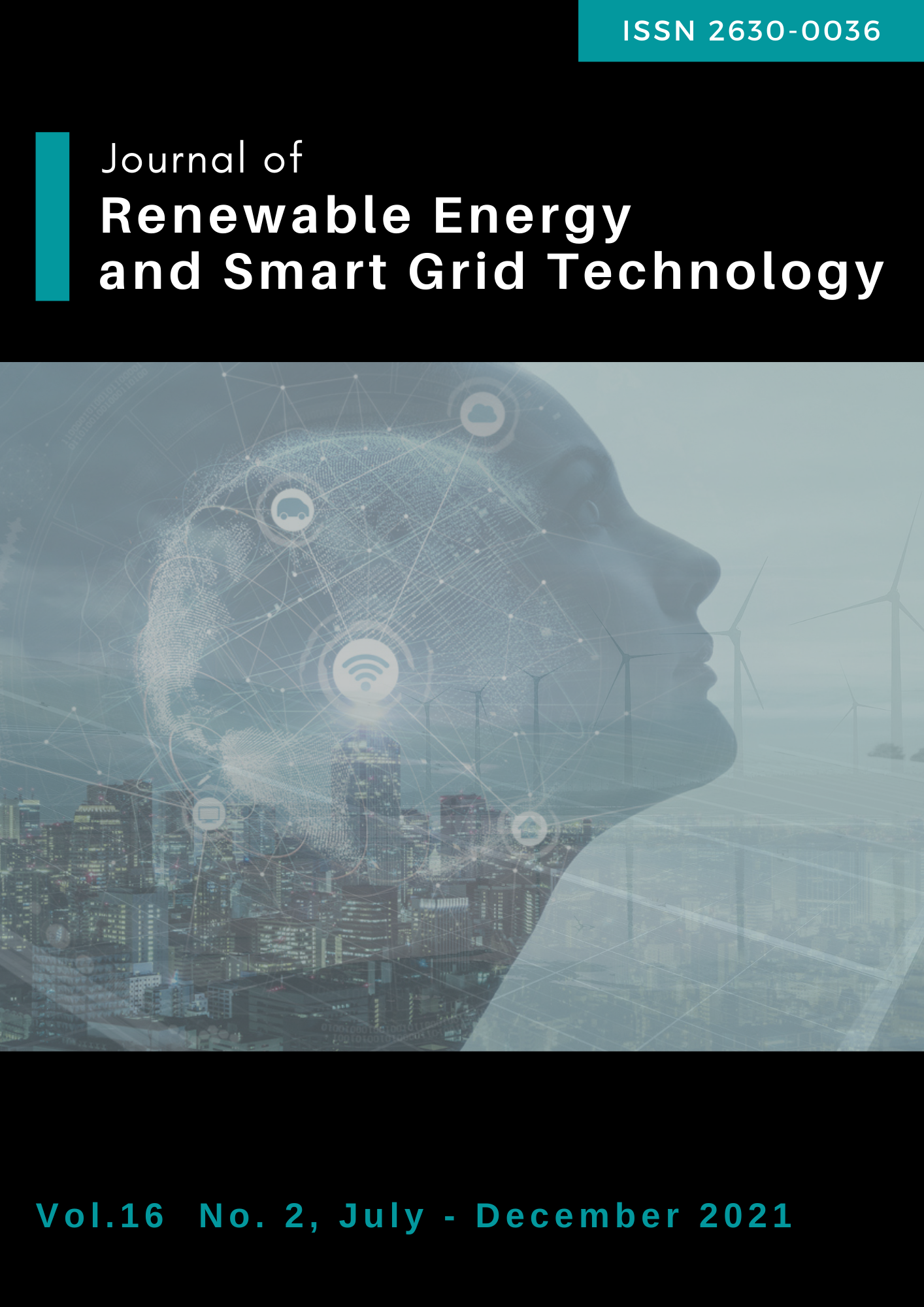Experimental Performance and Auto-Regressive with eXogenous Input (ARX) Modelling of an Anti-UV Polycarbonate Sheet-covered Solar Dryer Equipped with a Control System for Drying Para Rubber Sheets
Keywords:
Solar Drying, Para Rubber Sheet, Greenhouse Dryer, Control System, ARX ModellingAbstract
This paper presents the experimental performance and ARX modelling of an anti-UV polycarbonate sheet-covered solar dryer equipped with a control system for drying para rubber sheets. The dryer was built at Silpakorn University (13.82ºN, 100.04ºE), Nakhon Pathom, Thailand. This dryer comprises a roof structure covered by anti-UV polycarbonate sheets, shelves for hanging the rubber sheets, concrete floor, ventilation system and drying control system. The control system comprises temperature and relative humidity sensors and an on-off controller of the ventilating fans. The dryer is a medium size of a large-scale greenhouse type which has a length of 12.4 m, a width of 8.0 m and a height of 3.5 m and it can be used to dry 500 para rubber sheets, each of which has a dimension of approximately 0.46 m × 0.90 m × 0.005 m. The experimental results revealed that the moisture content of the sheets can be reduced from 30% w.b. to the final value of 1% w.b. in 3 days and the control system functioned as it was designed. In addition, the polycarbonate sheets can protect para rubber sheets from UV solar radiation and high quality dried rubber sheets are obtained. Based on the drying experiments, the dryer was modelled using the ARX approach. It was found that the model predicted well moisture content of the rubber sheets dried in this dryer.
References
CMGF Secretariat Thailand (2020). An analysis of the economic situation of the southern region (rubber and oil palm) in 2020. Prince of Songkla University (in Thai).
Rubber Authority of Thailand (2017). Production of good quality rubber sheets. Retrieved July 1, 2021, from http://www.raot.co.th/ewt_dl_link.php?nid=4871.
Hussadin, M., & Pongtornkulpanich, A. (2015). Solar-biomass drying system for para rubber sheet. International Journal of Renewable Energy, 10(1), 37-46.
Janjai, S., Laksanaboonsong, J., Nunez, M., & Thongsathitya, A. (2015). Development of a method for generating operational solar radiation maps from satellite data for a tropical environment. Solar Energy, 78(6), 739-751.
Jeentada, W., Phetsongkram, P., & Chankrachang, T. (2016). Drying of para rubber sheet using forced convection solar dryer. Journal of science of Burapha University, 21(1), 87-99 (in Thai).
Jeentada, W., Jareanjit, J., & Tippracha, P. (2018). Drying experiment of rubber sheet using solar dryer with solar collector installed on top wall of the dryer. The Journal of KMUTNB, 29(1), 23-33 (in Thai).
Breymayer, M., Pass, T., Mühlbauer, W., Amir, E.J., & Mulato, S. (1993). Solar-assisted smokehouse for the drying of natural rubber on small-scale Indonesian farms. Renewable Energy, 3(8), 831-839.
Nielsen, S.S. (2010). Food Analysis, Fourth Edition. West Lafayette, IN, USA: Springer.
Ljung, L. (2017). System Identification Toolbox: Getting Started Guide. Natick, MA, USA: The MathWorks, Inc.
Iqbal, M. (1983). An Introduction to Solar Radiation. Academic Press, Toronto.
Pankaew, P., Aumporn, O., Janjai, S., Mundpookhiew, T., & Bala, B.K. (2019). Performance of parabolic greenhouse solar dryer equipped with rice husk burning system for banana drying. Journal of Renewable Energy and Smart Grid Technology, 14(1), 52-65.
Downloads
Published
How to Cite
Issue
Section
License
Copyright (c) 2021 School of Renewable Energy and Smart Grid Technology (SGtech)

This work is licensed under a Creative Commons Attribution-NonCommercial-NoDerivatives 4.0 International License.
All copyrights of the above manuscript, including rights to publish in any media, are transferred to the SGtech.
The authors retain the following rights;
1. All proprietary rights other than copyright.
2. Re-use of all or part of the above manuscript in their work.
3. Reproduction of the above manuscript for author’s personal use or for company/institution use provided that
(a) prior permission of SGtech is obtained,
(b) the source and SGtech copyright notice are indicated, and
(c) the copies are not offered for sale.









